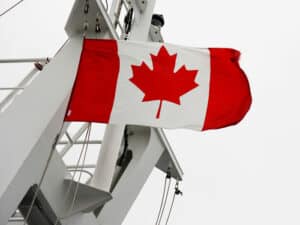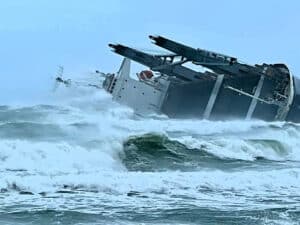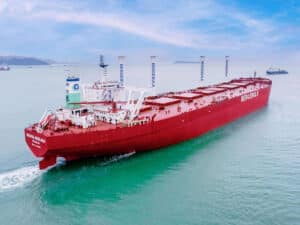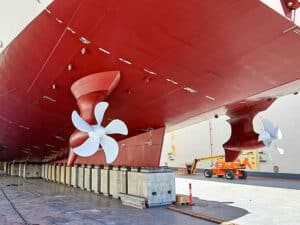
Op-Ed: The towing industry is green and getting greener
Written by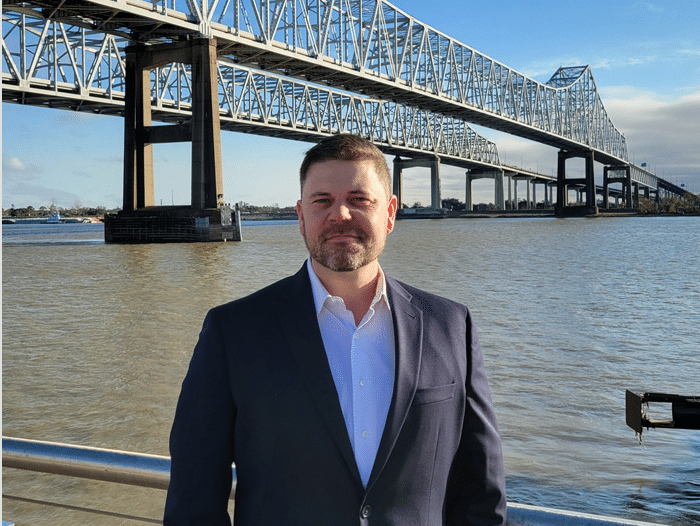
Michael Breslin
By
Mike Breslin, Director – Safety and Sustainability, The American Waterways Operators
America’s waterways have been called a natural superhighway system for the remarkable way our interconnected network of rivers and coastlines facilitates our nation’s commerce. The members of the American Waterways Operators (AWO)—the tugboat, towboat, and barge industry’s advocate, resource, and united voice for safe, sustainable, and efficient transportation on America’s waterways, oceans, and coasts—have a deep and longstanding commitment to environmental stewardship because we understand the importance of these waterways to our businesses and, more importantly, to the communities that surround and depend on them. After all, we’re members of those communities, too!
The natural advantages of the U.S. waterways system enable us to move critical commodities by water throughout the United States—some 665 million tons annually—and to do so extremely efficiently. This efficiency helps to make us the most environmentally friendly mode of domestic freight transportation, and we have the record to prove it.
The key to our industry’s efficiency is capacity: a single towing vessel can push (or pull) barges carrying a massive amount of cargo. One dry cargo barge carries the same amount of agricultural products, construction materials, or other dry cargo as 16 rail cars or 70 tractor trailers, and one 27,500-barrel liquid cargo barge carries as much fuel, chemicals, or other liquid as 46 rail cars or 144 tanker trucks. That’s already a significant savings, but consider that on the inland waterways, a towing vessel can move as many as 45 barges (on the Lower Mississippi River). On smaller waterways or locking rivers, a standard 15-barge tow carries as much cargo as six locomotives pulling 220 rail cars, or 1,050 trucks and their trailers.
What does this mean for the environment? It means that moving cargo by barge on the waterways emits vastly less greenhouse gases than rail or highway transportation. In 2019, barge freight produced 30% less greenhouse gas emissions per ton-mile than rail and more than 900% less than truck freight. The 2022 study that published this finding by the Texas A&M Transportation Institute also reviewed the relative fuel efficiency—the key contributor to carbon footprint – of inland barge, rail and truck transportation, and found that not only is barging the most fuel efficient, but also that the “inland waterway is the only mode to show continuous improvement [from 2005-2019]. Rail and truck remained relatively unchanged during this same period.”
This is critically important because it highlights that AWO’s members aren’t content to rely on the natural advantages of waterborne transportation. AWO members are committed to continuous improvement in sustainability to further reduce the environmental impact of their operations. It was this commitment that led to the development of AWO’s Environmental Stewardship Best Practices. (AWO ESBPs) in 2021.
The AWO ESBPs are a compendium of voluntary key performance indicators (KPIs) intended to inform, support, and guide vessel operators’ continuous improvement in water quality, energy efficiency, air quality, waste management, and corporate responsibility. Members can use the AWO ESBPs to identify new practices to advance their existing environmental policies and procedures and build out a comprehensive sustainability plan. And our commitment to continuous improvement extends to the AWO ESBPs themselves—we’re currently working with members to review the uptake and efficacy of the KPIs.
Building on this record, last spring AWO’s Board of Directors established a CEO-level Sustainability Task Force to make recommendations for how AWO can support members in navigating one of the most significant challenges our industry has ever faced, the accelerating global drive for decarbonization. As the most environmentally friendly, fuel-efficient mode of freight transportation, we are uniquely positioned to partner with customers, government agencies, and other stakeholders to improve the sustainability of the U.S. transportation sector: in fact, the surest way to reduce the carbon footprint of our transportation system is to move more cargo by water! And, just as the maritime industry has transitioned from sail to steam to diesel power, we will see the increasing integration of alternative fuels into our fleet, led by AWO members who are investing in new vessel technologies. Guided by the Sustainability Task Force’s recommendations, AWO’s Safety and Sustainability program will continue to provide forums for information-sharing, tools, and resources to support continuous improvement in sustainability.
It took 35 years to build the interstate highway system, and in the 30 years since, we have seen their capacity maxed out, with little room to grow in most urban areas. Our marine highways, on the other hand, offer more efficient freight transportation and plenty of excess capacity. While the U.S. has made investments in ports and waterways infrastructure, the foundation of the marine transportation system, the waterways themselves are a shared inheritance that we are all entrusted to protect.
Whether moving grain down the Lower Mississippi River for export, carrying components to wind turbines offshore of New York, or transporting fuel to remote communities in Western Alaska, the tugboat, towboat, and barge industry is, and will remain, the best choice for sustainable freight transportation as long as we remain committed to continuous improvement. And because we not only work but live on and around the waterways, AWO’s members will never stop seeking to become ever better stewards of the natural resources on which our industry and our nation depend.

